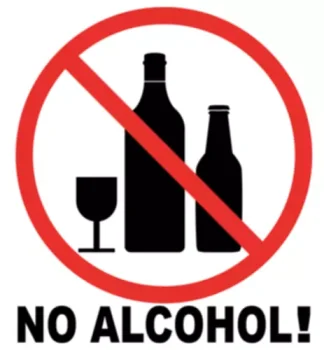
Both connote a problem with drinking and negative impacts on day-to-day life from alcohol consumption. But there are subtle yet important distinctions between these two terms. It’s important to note that treatment effectiveness can vary, and what works for one person may not work for another. Therefore, a personalized treatment plan, often involving distinguish between alcohol abuse and alcoholism a combination of therapies, is crucial for long-term recovery. Additionally, addressing co-occurring mental health disorders is essential, as they often contribute to substance use disorders. Access to quality treatment can be facilitated through resources like the NIAAA Alcohol Treatment Navigator, which helps individuals find evidence-based care.
- Alcoholism is an addiction to alcohol, often manifesting as physical dependence.
- RehabCenter.net is intended for educational purposes only and is not designed to provide medical advice of any kind.
- Problem drinking is a complex condition that can be experienced and described in a variety of ways.
- The Diagnostic and Statistical Manual of Mental Disorders, Fifth Edition (DSM-5), provides criteria for diagnosing AUD, which includes a spectrum of behaviors from mild to severe.
- All condition, treatment and wellness content is medically reviewed by at least one medical professional ensuring the most accurate information possible.
Who is at risk for alcohol use disorder?
- Research suggests that between 50% and 60% of the risk for AUD is genetic, with environmental factors also playing a significant role.
- Behavioral changes, such as increased secrecy, mood swings, and neglecting responsibilities, can also indicate alcohol abuse.
- Alcohol use disorder and alcoholism can be used interchangeably in many instances.
- Both connote a problem with drinking and negative impacts on day-to-day life from alcohol consumption.
Alcohol abuse, often referred to as binge drinking or heavy drinking, is characterized by a pattern of drinking that results in harm to one’s health, interpersonal relationships, or ability to fulfill responsibilities. In contrast, alcoholism, or alcohol dependence, involves the physical need for alcohol to function, coupled with a loss of control over consumption and a preoccupation with drinking. Understanding how does alcohol abuse differ from alcoholism also necessitates exploring their impacts on health. Both alcohol abuse and alcoholism can lead to alarming health issues such as liver diseases, cardiovascular problems, and mental health disorders. The Centers for Disease Control and Prevention (CDC) warns that long-term alcohol misuse can lead to chronic diseases and other serious health outcomes (Centers for Disease Control and Prevention, 2020). Seek prompt medical care if you drink more than what is defined as moderate alcohol consumption.
- An overall emphasis on the AUD component may come first, or an emphasis on the co-occurring psychiatric disorder may take precedence, or both conditions can be treated simultaneously.
- People suffering from alcoholism often struggle with the majority of all of the symptoms of alcohol use disorder described in the DSM-V.
- Shape the future of healthcare and build your career within our diverse teams.
Effects on Health and Wellbeing
Alcohol abuse can disrupt daily life, leading to an inability to fulfill obligations and a tendency to engage in risky behaviors while under the influence. Conversely, alcoholism encompasses all the effects of alcohol abuse but also includes physical dependence. This chronic disease often results in severe psychological and physical health issues, such as liver https://ecosoberhouse.com/ disease, cardiovascular problems, and mental health disorders. The long-term impact of alcoholism can be more devastating, with potential for irreversible damage to one’s health, personal relationships, and social standing. Understanding the effects of alcohol abuse versus alcoholism is crucial in recognizing the severity and implications of each condition.

Is alcoholism a substance use disorder?
- In fact, the CDC found that 9 in 10 people who consume too much alcohol aren’t alcoholics or alcohol dependent.
- The co-occurrence of AUD and another mental health disorder can complicate the diagnoses and negatively impact the clinical course of both conditions.
- Knowing the difference between AUD and alcoholism can help you find the right treatment for a successful recovery.
Alcohol abuse, as delineated by the National Institute on Alcohol Abuse and Alcoholism (NIAAA), refers to a pattern of drinking that results in significant and recurrent adverse consequences. Alcohol abuse can lead to Alcohol use disorder (AUD), a medical condition characterized by an impaired ability to stop or control alcohol use despite the negative social, occupational, or health consequences. The Diagnostic and Statistical Manual of Mental Disorders, Fifth Edition (DSM-5), provides criteria for diagnosing AUD, which includes a spectrum of behaviors from mild to severe. Someone engaging in alcohol abuse may regularly consume excessive amounts of alcohol but might not show signs of physical dependence or withdrawal symptoms (National Institute on Alcohol Abuse and Alcoholism, 2021).
If your pattern of drinking results in repeated significant distress and problems functioning in your daily life, you likely have alcohol use disorder. However, even a mild disorder can escalate and lead to serious problems, so early treatment is important. Unhealthy alcohol use includes any alcohol use that puts your health or safety at risk or causes other alcohol-related problems. It also includes binge drinking — a pattern of drinking where a male has five or more drinks within two hours or a female has at least four drinks within two hours.

National Institute on Alcohol Abuse and Alcoholism (NIAAA)

Physical signs of alcohol abuse may include frequent hangovers, blackouts, and gastrointestinal problems. Behavioral changes, such as increased secrecy, mood swings, and neglecting responsibilities, can also indicate alcohol abuse. If you or someone you know exhibits these symptoms, seeking help from a healthcare provider is recommended. Early treatment can prevent the progression to alcohol use disorder (AUD) and reduce the risk of long-term health complications. Individuals who abuse alcohol and have severe issues with alcohol dependence most likely suffer from both alcoholism and an alcohol use disorder.

More frequently, complete abstinence from drinking is the preferred treatment, as the temptation to over-consume can be difficult for many. When your body becomes dependent on a substance like alcohol, it can react negatively when that substance is withheld. If you abstain from drinking for a few days and experience anxiety, depression, headaches, insomnia, or nausea, there’s a possibility you’re suffering from alcohol-related withdrawals. As alcohol abuse and alcoholism differ, so do the right treatment options for people with these conditions. Alcohol use disorder (AUD), formerly known as alcoholism and alcohol addiction, describes a long-term pattern of alcohol use that becomes difficult to control.

If you are struggling with excessive alcohol consumption, it is best to seek help. You can attend a 12-step program like Alcoholics Anonymous or, if your symptoms are more severe, you can find an alcoholism treatment program. If you see a doctor for your alcohol use, they will not diagnose you as an alcoholic. Instead, they will use the symptoms in the DSM-V to determine whether you have a mild, moderate or severe AUD. If you go to Alcoholics Anonymous, very rarely will you hear the term alcohol use disorder.









